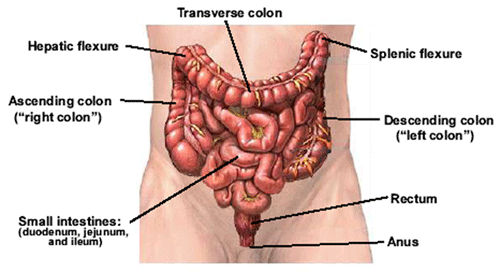Can I Get Social Security Disability Benefits for Crohn’s Disease?
- How Does the Social Security Administration Decide if I Qualify for Disability Benefits for Crohn’s Disease?
- About Crohn’s Disease and Disability
- Winning Social Security Disability Benefits for Crohn’s Disease by Meeting a Listing
- Residual Functional Capacity Assessment for Crohn’s Disease
- Getting Your Doctor’s Medical Opinion About What You Can Still Do
How Does the Social Security Administration Decide if I Qualify for Disability Benefits for Crohn’s Disease?
If you have Crohn’s disease, Social Security disability benefits may be available. To determine whether you are disabled by Crohn’s disease, Social Security Administration first considers whether your Crohn’s disease is severe enough to meet or equal a listing at Step 3 of the Sequential Evaluation Process. See Winning Social Security Disability Benefits for Crohn’s Disease by Meeting a Listing. If you meet or equal a listing because of Crohn’s disease, you are considered disabled.
If your Crohn’s disease is not severe enough to equal or meet a listing, Social Security Administration must assess your residual functional capacity (RFC) (the work you can still do, despite your illness), to determine whether you qualify for benefits at Step 4 and Step 5 of the Sequential Evaluation Process. See Residual Functional Capacity Assessment for Crohn’s Disease.
About Crohn’s Disease and Disability
What Is Crohn’s Disease?
Crohn’s disease is a chronic, inflammatory disease of the gastrointestinal tract (see Figure 1 below) that produces symptoms such as severe abdominal pain, cramping, nausea, fatigue, diarrhea, and insomnia.
With Crohn’s disease, the body’s immune system attacks the gastrointestinal tract, causing inflammation.
Other Symptoms
Crohn’s disease may involve the entire alimentary tract from the mouth to the anus.
In addition to the common symptoms of abdominal pain, cramping, nausea, fatigue, diarrhea, and insomnia, you may also experience fecal incontinence, rectal bleeding, fever, vomiting, arthralgia (joint pain), abdominal tenderness, palpable abdominal mass (usually inflamed loops of bowel) and perineal disease. You may also have weight loss or other indications of malnutrition.

Figure 1: The human gastrointestinal tract.
When Does it Occur?
Crohn’s disease can occur at any age. However, it is most common for it to begin either when you are in your teens and twenties or between your fifties and seventies.
Cause and Treatment
The cause of Crohn’s disease is unknown, and it is rarely curable. Recurrence may be a lifelong problem even after surgery. Treatment is usually limited to controlling the symptoms.
Related Conditions
Crohn’s disease is a form of inflammatory bowel disease (IBD), which includes both Crohn’s disease and ulcerative colitis. The various forms of inflammatory bowel disease share similar symptoms and treatments.
Crohn’s disease affects the small intestine. Ulcerative colitis affects the large intestine (the colon).
Winning Social Security Disability Benefits for Crohn’s Disease by Meeting a Listing
To determine whether you are disabled at Step 3 of the Sequential Evaluation Process, the Social Security Administration will consider whether your Crohn’s disease is severe enough to meet or equal the Crohn’s disease listing. The Social Security Administration has developed rules called Listing of Impairments for most common impairments. The listing for a particular impairment describes a degree of severity that Social Security Administration presumes would prevent a person from performing substantial work. You will be considered disabled if your Crohn’s disease is severe enough to meet or equal the Crohn’s disease listing.
The listing for Crohn’s disease is 5.06, which has two parts: A and B. You will be disabled if you meet either part.
Meeting Social Security Administration Listing 5.06A for Crohn’s Disease
A Social Security disability claimant with Crohn’s disease meets listing 5.06A and is disabled if he or she has had sufficient narrowing of the intestine.
Listing 5.06A requires two hospitalizations for bowel obstruction at least 60 days apart within a six-month period. This hospitalization requirement means that only the most severe chronic cases qualify under listing 5.06A.
If the complications are eliminated by surgery, then you do not qualify under part A. In many instances, surgery does produce long-term benefit when combined with the proper diet and medication.
Meeting Social Security Administration Listing 5.06B for Crohn’s Disease
A Social Security disability claimant with Crohn’s disease meets listing 5.06(B) and is disabled if he or she has two of the following within a consecutive 6-month period while being treated:
- 5.06B.1 Anemia with hemoglobin of less than 10.0 g/dL.
- 5.06B.2. Serum albumin of 3.0 g/dL or less.
- 5.06B.3. Clinically documented tender abdominal mass palpable on physical examination with abdominal pain or cramping that is not completely controlled by prescribed narcotic medication.
- 5.06B.4. Perineal disease with a draining abscess or fistula, with pain that is not completely controlled by prescribed narcotic medication.
- 5.06B.5. Involuntary weight loss of at least 10 percent from baseline.
- 5.06B.6. Need for supplemental daily enteral nutrition via a gastrostomy or daily parenteral nutrition via a central venous catheter.
Continue to Residual Functional Capacity Assessment for Crohn’s Disease.




